7 /10 1 Votes7
Initial release date 14 September 2001 | 7/10 IGN Mode(s) Single-player | |||||||||||||||||||||||||||||||||
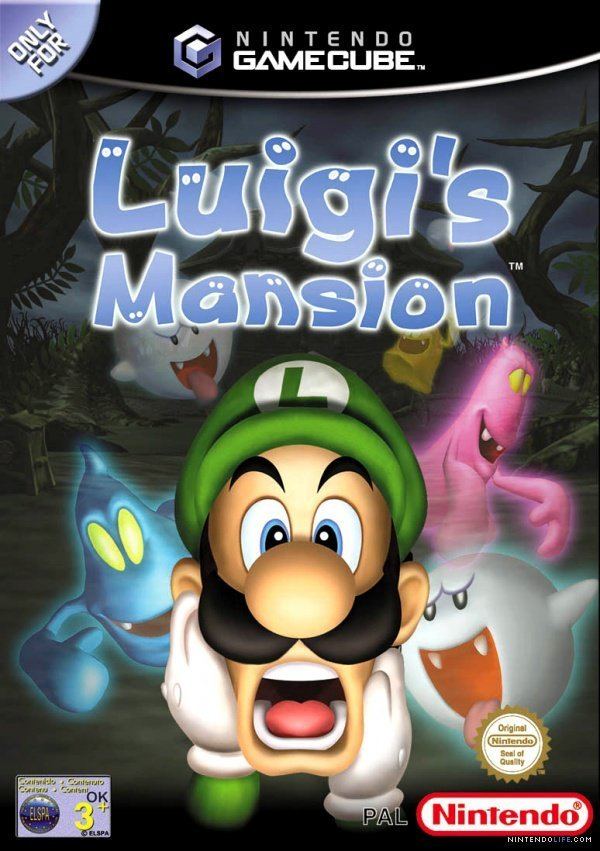 | ||||||||||||||||||||||||||||||||||
Producer(s) Shigeru MiyamotoTakashi Tezuka Composer(s) Kazumi TotakaShinobu Tanaka Developers Nintendo, Nintendo Entertainment Analysis & Development Similar Mario Series games, Nintendo games, Survival horror games | ||||||||||||||||||||||||||||||||||
Luigi s mansion full game walkthrough all gold portraits no commentary
Luigi's Mansion (Japanese: ルイージマンション, Hepburn: Ruīji Manshon, lit. Luigi Mansion) is a 2001 action-adventure game developed and published by Nintendo for the GameCube. The game was a launch title for the GameCube and is the first game in the Mario franchise to be released for the console, launched in Japan on September 14, 2001, in North America on November 18, 2001, and in Europe on May 3, 2002. It is the second title in the franchise in which Luigi is the main character, instead of Mario, with players controlling him as he explores a haunted mansion, dealing with ghosts that lie within its room by capturing them through a special device supplied by Elvin Gadd, a scientist in the Mario Universe who is introduced in this game, while searching for his missing brother.
Contents
- Luigi s mansion full game walkthrough all gold portraits no commentary
- Luigi s mansion dark moon gameplay walkthrough part 1 a 1 poltergust 5000 nintendo 3ds
- Gameplay
- Plot
- Development
- Reception
- Legacy
- References
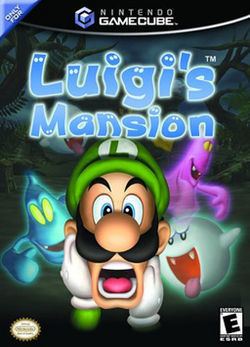
Luigi's Mansion was relatively well received by reviewers, despite being criticized for its short length. The game has sold over 2.5 million copies, and is the fifth best-selling Nintendo GameCube game in the United States. It was one of the first games to be re-released as a Player's Choice title on the system. The game was later followed by a sequel entitled Luigi's Mansion: Dark Moon, released for the Nintendo 3DS in 2013.
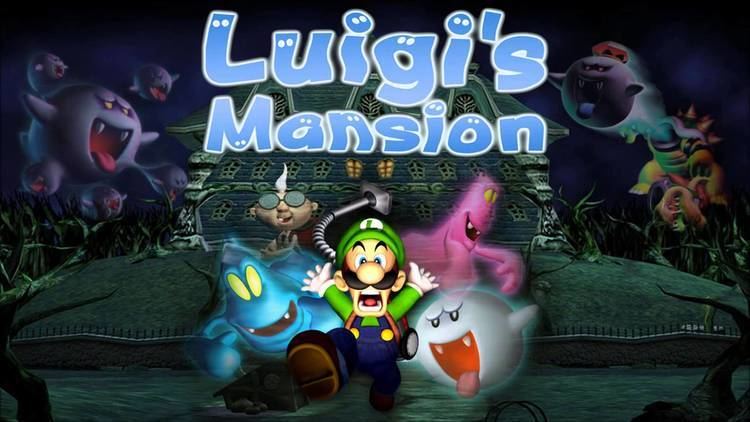
Luigi s mansion dark moon gameplay walkthrough part 1 a 1 poltergust 5000 nintendo 3ds
Gameplay
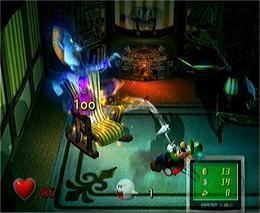
In Luigi's Mansion, the main story is played out over four stages, with players able to also access a training room and a gallery at the laboratory of Professor E. Gadd between stages. In each stage, players control Luigi as he explores the mansion's rooms and hunts down the ghosts that lay within them, acquiring keys to get through locked doors and eventually dealing with a boss ghost hidden at the end of the stage, with more rooms becoming accessible as each stage is completed. To assist him in his task, Luigi uses a flashlight and two inventions supplied by E. Gadd - the Poltergust 3000, a specially modified, high powered vacuum cleaner; and the Game Boy Horror, a parody of Nintendo's Game Boy Color.
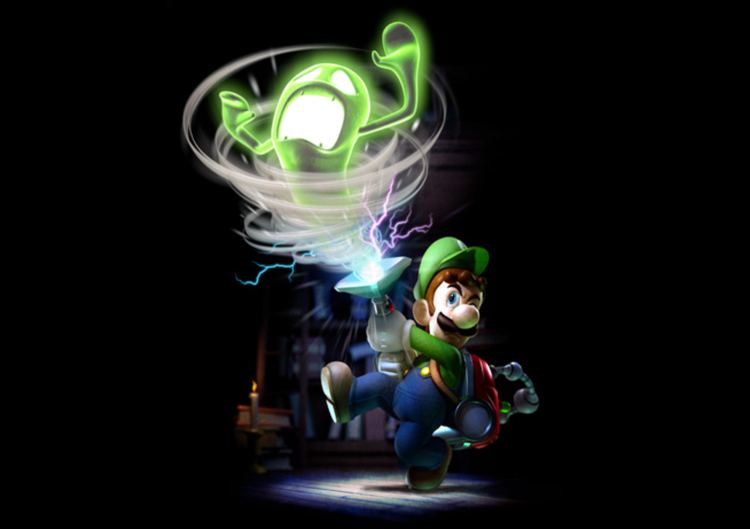
In order to capture ghosts, Luigi must first use his flashlight to light up the ghost and stun it, revealing their heart. When this happens, players use the Poltergust 3000 to suck them up, steadily reducing the ghost's hit points to zero; the more hit points, the more time it takes for a ghost to be captured, giving them a chance to break free while leaving Luigi more exposed to being harmed; if his HP is reduced to zero from being hurt by the ghosts, the game is over. Once a ghost's HP is reduced to zero, they are captured. Some ghosts cannot be captured easily until Luigi locates three special medallions, each granting the Poltergust with the ability to suck up certain elements from the rooms and use them to capture special ghosts lying within the mansion. In addition to capturing the regular ghosts in the mansion, Luigi must also draw out special, "portrait ghosts" from some rooms, each requiring a condition be met to make them available for capture. Once all the ghosts in a room are captured, it brightens up; the music also changes, being pleasantly whistled by Luigi, while being haunted and spooky when filled with ghosts, with Luigi humming nervously to the tune.
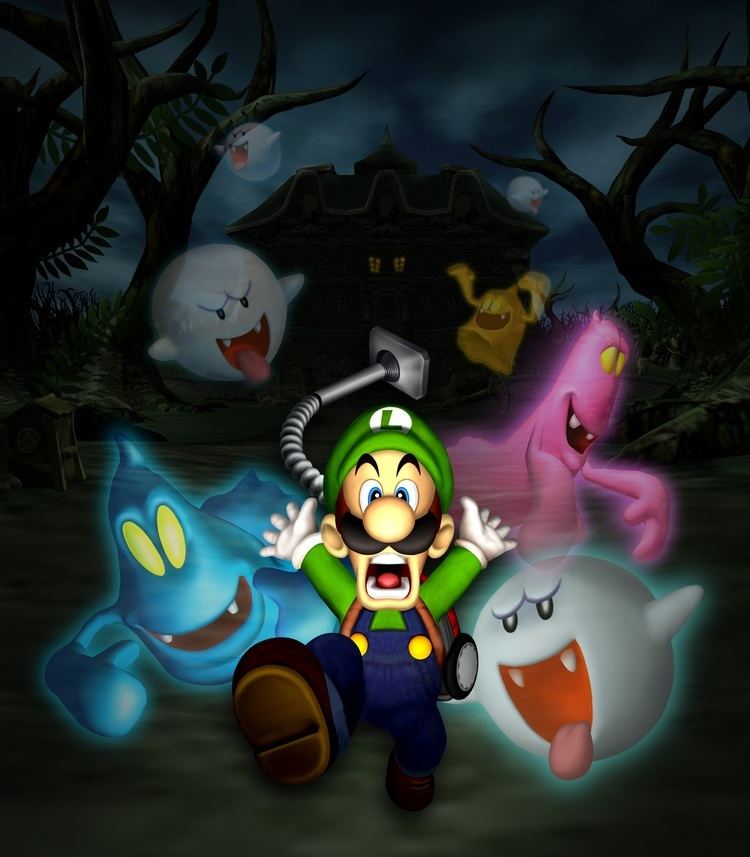
Utilising the Game Boy Horror, players can use it to gain access to a map of the mansion, seeing which rooms they have visited, what doors are open and which remain locked; when Luigi finds a key during his explorations, the Game Boy Horror automatically indicates which door it unlocks. In addition to a map function, the device also keeps track of any treasure that Luigi has found - rooms will usually have treasure hidden within, which can be either coins, gems, gold bars and so forth, hidden within items and even in a chest that appears when the ghosts are cleared out, which Luigi can draw out and then suck up with the Poltergust; if a ghost harms Luigi, he will drop a small portion of collected treasure that he will need to recover before it disappears. After Luigi encounters a group of Boos hiding in the mansion, the device can be used to find each one hiding in a room, through a beeper sound and a flashing yellow light on the device, which turns red when Luigi is close to one; Boos can only be located in rooms that have become lit after their ghosts have been cleared out. Boos are trickier to deal with, as they can plant decoys and traps within objects they can hide in that can fool the Horror, and will escape into other rooms if they can, forcing the player to chase after them.
Once a stage is completed, all portrait ghosts are restored to their paintings by E. Gadd, which the player can view in his laboratory's gallery, at which point a result screen reveals the portrait ghosts Luigi has managed to capture, along with the total amount of treasure he recovered for that stage. Once the final boss of Luigi's Mansion is defeated, the player is given a rating (A to H) during the end credits, based on the amount of treasure Luigi has found. After completing the game once, a second mode is offered, called the "Hidden Mansion". In the European version of this mode, the entire mansion appears as a reflection of the previous version, with bosses being made more difficult, ghosts and Portrait Ghosts being tricker to capture, and more ghosts being in some of the rooms.
Plot
The game begins with Luigi having won a mansion in a contest. Despite not having entered any contest, he promptly told Mario about the mansion, and the two agreed to meet up outside it that evening. Luigi takes a flashlight with him and he follows the map to the mansion. Upon finally arriving at his new mansion, which looks much more sinister than the supplied photo, Mario is nowhere to be found. Luigi proceeds inside the mansion, entering the Parlor after he gains the key from a strange ghost-like shape. Upon entry, he is soon assaulted by a Gold Ghost, only to be saved by a little old man wielding a vacuum cleaner. The old man, however, is unable to reel in the ghost and is soon overpowered. After being helped to his feet by Luigi, the old man introduces himself as Professor Elvin Gadd. The two retreat from the mansion when more of the Gold Ghosts appear.
In E. Gadd's laboratory, he explains how Luigi's newly won mansion is obviously the work of something not of this world, as it only appeared a few nights ago. As Luigi further explores the mansion, he discovers that it was built by King Boo to shelter the now-freed portrait ghosts, ghosts whom E. Gadd had previously captured and contained in paintings with a device dubbed the "Ghost Potrificationizer". They sent Luigi the supplied photo and map to lure him into a trap. Gadd also tells Luigi that he saw someone wearing a red cap went into the mansion some time ago, but has not seen him since. Upon learning that the red capped man (Mario) was Luigi's brother, E. Gadd allows Luigi to take over his duties of ghost-catching and entrusts him with his powerful vacuum cleaner, the "Poltergust 3000," and a multipurpose invention called the GameBoy Horror that allows him to communicate with Luigi.
After numerous confrontations and challenges with many ghosts, portrait ghosts, boss ghosts, Boos, puzzles, and locked doors, Luigi confronts King Boo, who has trapped Mario inside a painting like the portrait ghosts and hung him in a secret altar in the basement. King Boo pulls Luigi into a painting for their final battle in an arena that resembles the mansion's roof, puppeteering a lifelike Bowser suit from the inside. Using spiked, explosive metal balls thrown by "Bowser", Luigi finds a way to blast off the suit's head and eventually vacuum and defeat King Boo, causing "Bowser" to collapse. Luigi returns to E. Gadd with Mario's painting and successfully extracts him from within it using the Ghost Portrificationizer in reverse. King Boo is turned into a painting along with the other portrait ghosts. The ending also sees the haunted mansion disappear, after which Professor E. Gadd uses the treasure Luigi collected on his adventure to build a new, non-haunted mansion on the site of the original mansion. The size of the house depends on how much treasure the player gathered before the end of the game.
Development
The game was first revealed at Nintendo Space World 2000 as a technological demo designed to show off the graphical capabilities of the GameCube. The full motion video footage had scenes seen in later trailers and commercials for the game, but were never used in the final release. This footage includes Luigi running from an unknown ghost in the Foyer, ghosts playing cards in the Parlor, ghosts circling around Luigi, and Luigi standing outside the mansion with lighting flashing. Soon after its creation, Nintendo decided to make the demo into a full-fledged video game. A year later, Luigi's Mansion was later shown at the Electronic Entertainment Expo alongside the GameCube console. A newer version of the game, more closely related to the final version, was later revealed at Nintendo Space World 2001.
The original plan for Luigi's Mansion involved a game where the levels revolved around a large mansion or complex. Tests were later done with Mario characters in dollhouses and such. Once it was transitioned into a GameCube project, Luigi was selected as the main character in order to keep the game original and new. The other gameplay ideas, such as ghosts and the ghost-sucking vacuum cleaner, were added later. Older concepts, such as a role-playing game-like system which made real-time changes to rooms, as well as an underground cave area located under the mansion, were also scrapped due to the inclusion of the new ideas.
Luigi's Mansion's music was composed by Shinobu Tanaka and Kazumi Totaka, and as such contains "Totaka's Song", a song featured in almost every game that Totaka has composed. It is found by waiting on the controller configuration screen at the Training Room for about three and a half minutes. The main theme of Luigi's Mansion is orchestrated and arranged by Shogo Sakai for Super Smash Bros. Brawl. The game featured voice actors Charles Martinet as the voice of Mario and Luigi, and Jen Taylor as the voice of Toad. Luigi's Mansion received an award for its audio by BAFTA Interactive Entertainment Awards in 2002.
All GameCube systems support the display of stereoscopic 3D, and Luigi's Mansion was developed to utilize this feature. However, 3D televisions were not widespread at the time, and it was deemed that compatible displays would be too cost-prohibitive for the consumer. As a result, the feature was never enabled outside of development.
Reception
Commercially, Luigi's Mansion is the most successful GameCube launch title and the best-selling game of November 2001. Despite meager sales in Japan at around 348,000 units in total, it became the fifth best-selling Nintendo GameCube game in the United States, with sales of roughly 2.19 million units. It was also one of the first Player's Choice titles on the console, along with Super Smash Bros. Melee and Pikmin.
Critically, Luigi's Mansion received generally positive reviews, and reviewers praised the game's graphics, design, and gameplay. GameSpot stated that Luigi's Mansion "features some refreshing ideas" and "flashes of brilliance." The gaming magazine Nintendo Power praised the game for being "very enjoyable while it lasts, with its clever puzzles and innovative game play." GameSpy said that the game features "great visuals, imaginative game design and some classic Nintendo magic." The game was referred to as "a masterful example of game design" by GamePro. Game Revolution stated that "the graphics are quite beautiful and the interesting game mechanics are enjoyable." The American-based publication Game Informer praised the gameplay, and referred to it as "brilliant and up to par with Miyamoto's best." The audio was praised by IGN, who considered Luigi's voice acting as "cute, humorous and satisfying", and GameSpy, who declared that the soundtrack remains "subtle, amusing and totally suitable throughout the game". The Japanese video game publication Famitsu awarded the game with a gold rating, and noted that the control system, while tricky at first, works well.
The game has also received criticism, mainly because of its length. GameSpot said that Luigi's Mansion "fails to match the classic status of Mario's adventures" and that the "short amount of time it takes to complete it makes it a hard recommendation." The review, however, also considered that the short length prevents the gameplay and audio from getting tiresome. GameSpy also criticized the game's length, saying that it could be beaten in about six hours. Allgame declared that Luigi's Mansion "ultimately fails to deliver a cohesive gameplay experience over the long-term." Fran Mirabella III of IGN felt that the game was sub-par, due to its "predictable, formulaic gameplay." G4's TV show X-Play criticized Luigi's Mansion in their special on Mario games and media, calling the game a letdown for players waiting for the first Mario game on the GameCube. Luigi's Mansion was awarded the 2002 BAFTA Interactive Entertainment Award for audio. The game placed 99th in Official Nintendo Magazine's 100 greatest Nintendo games of all time.
Legacy
Luigi's Mansion introduced two new characters, Professor Elvin Gadd (or simply E. Gadd for short) and King Boo. E. Gadd has reappeared in other Mario games, such as Mario Party 6 and Mario & Luigi: Partners in Time. E. Gadd is referenced in Super Mario Sunshine as the creator of Mario's F.L.U.D.D. device and Bowser Jr.'s paintbrush. He also appears as a playable character skin in Super Mario Maker. King Boo has also reappeared in other games, either as a boss (including Super Mario 64 DS and Super Princess Peach) or a playable character (including Mario Kart: Double Dash!! and Mario Super Sluggers). Although King Boo does not appear in Super Mario Sunshine, his name is used in the Western version of the game for a noticeably different Boo, who appears as a boss. The ghosts in Luigi's Mansion have made appearances in other Nintendo games, such as Mario Party 8 and Wii Party.
The mansion in the game has reappeared in other Mario games, usually acting as Luigi's home stage. It appeared in Mario Kart: Double Dash!!, Mario Kart 7, Mario Power Tennis, Mario Kart DS, Mario Hoops 3-on-3, Mario Super Sluggers and Mario Sports Mix. In Super Smash Bros. Brawl, a Luigi's Mansion stage is unlockable. It can be destroyed when characters hit a set of pillars, but it can rebuild itself later on. There are also some stickers and trophies based on the game. The stage reappears in Super Smash Bros. for Wii U.
A sequel was revealed at E3 2011 for the Nintendo 3DS, and demonstrated as Luigi's Mansion: Dark Moon at E3 2012. After a delay, the sequel was released in March 2013 to celebrate the Year of Luigi.
At E3 2012, Nintendo introduced the Wii U launch title Nintendo Land, which hosts Luigi's Ghost Mansion, a multiplayer minigame based on Luigi's Mansion. In this minigame, four players controlling Miis dressed up as Mario, Luigi, Wario and Waluigi have to drain the energy of a ghost, while the GamePad player, controlling the ghost, must make all the other players faint before time runs out.
In 2015, Nintendo released Luigi's Mansion Arcade, an arcade version of Luigi's Mansion: Dark Moon developed by Capcom and published by Sega. The game uses the same plot as Dark Moon, but goes for a first-person, on-rails gameplay style, and utilizes a special vacuum-based controller. The game is mostly exclusive to Japanese arcades, although some cabinets have been localized and released at some specific Dave and Buster's locations in the United States.
